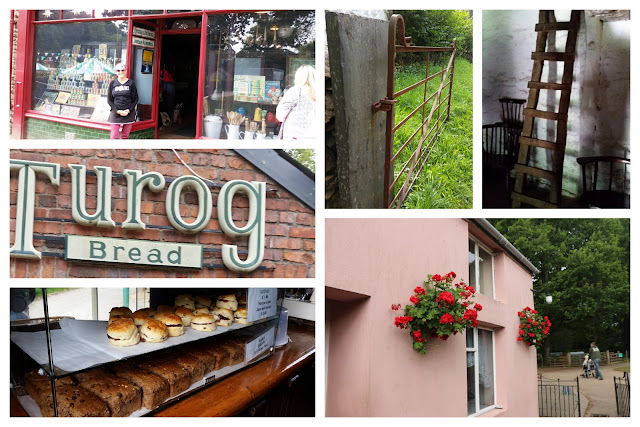A redeveloped main reception building named Gweithdy was opened in July 2017 and is quite impressive.
The museum includes more than forty buildings which represent the architecture of Wales, including a nonconformist chapel (in this case, Unitarian), a village schoolhouse, a Toll road tollbooth, a cockpit, a pigsty, and a tannery.
The museum holds displays of traditional crafts with a working blacksmith forge, a pottery, a weaver, miller, and clog maker. It also includes two working water mills: one flour mill and one wool mill. Part of the site includes a small working farm which concentrates on preserving local Welsh native breeds of livestock. Produce from the museum's bakery and flour mill is available for sale.
The medieval parish church of Saint Teilo, formerly at Llandeilo Tal-y-bont in west Glamorgan (restored to its pre-Reformation state), was opened in October 2007 by the Archbishop of Canterbury, Rowan Williams. A Tudor merchant's house from Haverfordwest, opened in 2012, is the latest building to be added to the museum's collection. Future plans include the relocation of the historic Vulcan public house from Newtown in Cardiff.
Although the museum was intended to preserve aspects of Welsh rural life, it now includes several buildings that depict the industrial working life that succeeded it, that being almost extinct in Wales. There is a row of workers' cottages, depicting furnishing from 1800 to 1985, from Rhyd-y-car near Merthyr Tydfil, as well as the pristine Oakdale Workmen's Institute. Even a post-war prefabricated bungalow has been erected on the grounds.
Since 1996 the museum has hosted the Everyman Summer Theatre Festival when it re-located from Dyffryn Gardens. This festival, which includes a Shakespeare play, a Musical, and a Children's Show has become part of Welsh theatrical calendar since its founding at Dyffryn in 1983.
Off to the Plymoth Arms Pub for lunch before heading back to Rhoose for a rest before Performance number 2 at Chapter Arts










